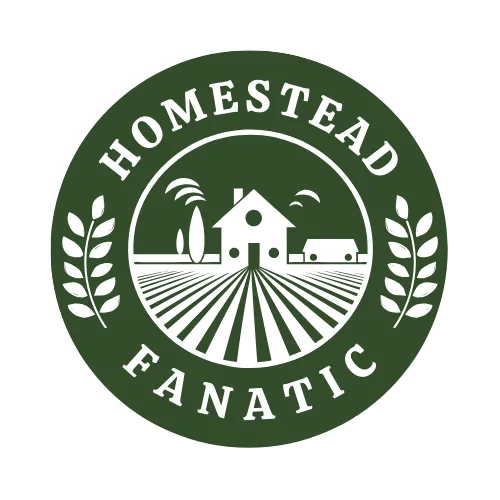
HOMESTEAD FANATIC BLOG
Discover amazing destinations, plan your perfect trip, and book unforgettable experiences. Our travel website makes traveling around the world easy, enjoyable, and hassle-free.
EXPLORE GREAT PLACES
THE HOMESTEAD BLOG

Canned vs. Dehydrated Food: What’s Best for Preppers?
When it comes to building a reliable emergency food supply, preppers face an age-old question: canned vs. dehydrated food – which is best? Both options have unique advantages and drawbacks, making it crucial to weigh each one carefully. Whether you're prepping for natural disasters, economic downturns, or long-term survival scenarios, understanding the pros and cons will help you make the best decision for your food storage plan.
Understanding Canned Food
Canned food has long been a staple in emergency food supplies due to its convenience and long shelf life. Let’s dive into the key benefits and downsides:
Advantages:
Ready-to-Eat Convenience: Most canned foods require no additional preparation. You can eat directly from the can if necessary, making them ideal for situations where cooking might be impossible.
Long Shelf Life: Canned goods can last anywhere from 2 to 5 years, with some products staying edible for even longer if stored properly.
Nutrient Retention: Canning locks in nutrients at the time of preservation, ensuring the food maintains its nutritional value over time.
Water Content: Many canned foods contain liquid, providing a vital hydration source in emergencies.
Disadvantages:
Heavy and Bulky: Canned goods add significant weight to your storage or bug-out bag.
Limited Variety: While there are many options, the variety isn’t as diverse as with dehydrated foods.
Risk of Contamination: Damaged cans or improper storage conditions can lead to botulism or spoilage.
Understanding Dehydrated Food
Dehydrated food, often associated with camping and hiking, has become increasingly popular among preppers for its lightweight convenience and long shelf life.
Advantages:
Lightweight and Compact: Dehydrated foods weigh significantly less than canned foods, making them perfect for portable bug-out bags.
Extended Shelf Life: Properly stored dehydrated foods can last 10 to 25 years.
Variety: From fruits and vegetables to full meals, the range of dehydrated food options is vast.
Nutrient Preservation: Dehydration retains a good portion of the food’s nutrients.
Disadvantages:
Requires Water: Rehydration is necessary for most foods, making them less convenient in situations where water is scarce.
Preparation Time: Some meals take time to prepare, which can be inconvenient during emergencies.
Taste and Texture: Rehydrated food can have a different texture compared to its fresh or canned counterparts.
Comparing Shelf Life and Storage Requirements
When considering canned vs. dehydrated food for long-term food storage, shelf life is a critical factor. Canned foods typically last 2 to 5 years, while dehydrated foods can last decades if stored properly. Dehydrated food requires airtight containers and cool, dark storage, while canned food is less sensitive to temperature fluctuations.
Cost Comparison
Cost is another crucial consideration for preppers. Initially, canned foods are cheaper and easier to stockpile quickly. Dehydrated foods, especially pre-packaged survival meals, have a higher upfront cost but offer better value over time due to their extended shelf life.
Taste Test: Which Tastes Better?
Taste is subjective and depends on personal preference. Canned foods often retain more natural flavor and moisture, while dehydrated foods might taste slightly different after rehydration. Many preppers recommend taste-testing different brands before committing to large purchases.
Nutritional Value: Which Packs a Healthier Punch?
Nutritional content is a key factor when comparing canned vs. dehydrated food. Canned foods retain much of their original nutrients, especially when freshly packed. However, some water-soluble vitamins, like Vitamin C and B, may degrade over time. Dehydrated foods, on the other hand, lose a small percentage of nutrients during the dehydration process but retain their caloric value and mineral content for years.
A well-rounded prepper pantry includes foods rich in protein, fiber, vitamins, and minerals. Pairing canned meats or beans with dehydrated fruits and vegetables can create a balanced diet in emergency situations.
Space and Organization: Maximizing Your Storage
When considering long-term food storage, space is a premium. Canned foods, with their bulky size and heavier weight, require more shelf space and can be harder to organize. Investing in sturdy shelving and rotating stock to ensure older cans are used first helps keep things organized.
Dehydrated foods are far more space-efficient. Using vacuum-sealed bags or Mylar pouches with oxygen absorbers can greatly extend shelf life and reduce storage footprint. Buckets and bins offer further organization while keeping food safe from pests.
Sustainability and Self-Sufficiency
For those who embrace self-sufficiency, dehydrating food at home offers an incredible opportunity. With a dehydrator or even a simple solar drying setup, preppers can preserve garden harvests, wild edibles, or bulk purchases, reducing food waste and building a sustainable food supply.
Canning also offers a DIY approach, with many preppers mastering the art of water bath or pressure canning. Home-canned foods provide a deep sense of satisfaction and offer complete control over ingredients, eliminating unnecessary preservatives or additives.
Best Uses for Preppers
Canned Food: Ideal for short-term emergencies and situations where immediate consumption is necessary.
Dehydrated Food: Better suited for long-term storage and lightweight travel.
Final Verdict: Canned vs. Dehydrated Food?
Ultimately, the best option for preppers isn’t "either-or" – it’s a combination of both. A well-rounded prepper pantry includes canned foods for immediate consumption and dehydrated foods for long-term needs. By diversifying your food storage, you ensure greater flexibility and preparedness in any survival situation.
Conclusion
When building your emergency food supply, weighing the pros and cons of canned vs. dehydrated food is essential. Each type has its strengths, making them complementary choices for a comprehensive prepper strategy. Whether you prioritize shelf life, convenience, or cost, having both options in your stockpile will help you stay prepared for whatever comes your way.
By understanding the nuances of each food preservation method, preppers can confidently build a pantry that supports self-sufficiency and resilience. Embrace both canned and dehydrated foods as part of a balanced, versatile food storage plan. After all, preparation is about more than just surviving – it’s about thriving no matter what challenges lie ahead.

POPULAR QUESTIONS
Asked Questions ?
Many people interested in homesteading ask about how to get started, what animals and crops are best for beginners, and ways to generate income from their land. Food preservation techniques are also a common topic, as self-sufficiency plays a key role in homesteading success. These FAQs provide a helpful starting point for anyone looking to embrace a more independent and sustainable lifestyle.
What is homesteading?
Homesteading is a lifestyle focused on self-sufficiency, which often includes growing your own food, raising livestock, preserving food, and using sustainable practices to reduce reliance on modern systems.
How do I start homesteading with little or no land?
Even if you don’t have a large property, you can start small by container gardening, keeping backyard chickens (if permitted), composting, and learning essential skills like food preservation and DIY projects.
What animals are best for a beginner homesteader?
Chickens, rabbits, and ducks are great starter livestock. They require less space, are relatively easy to care for, and provide eggs or meat while helping with pest control.
How can I make money from homesteading?
Many homesteaders generate income by selling eggs, honey, homemade goods, fresh produce, handmade crafts, or even offering homestead-related workshops.
What are the best crops for beginner homesteaders?
Easy-to-grow crops include tomatoes, zucchini, lettuce, radishes, and herbs like basil and mint. These require minimal maintenance and provide a great starting point for new homesteaders.
How do I preserve food for long-term storage?
Canning, dehydrating, freezing, and fermenting are all effective ways to preserve food. Each method has its benefits, depending on the type of food and your available storage space.

Your Gateway to Global Adventures Await Here.
Quick Links
Home
About Us
Services
Blog
Quick Links
Email:
